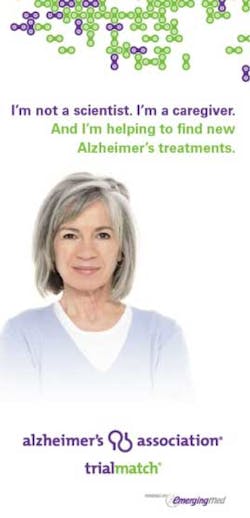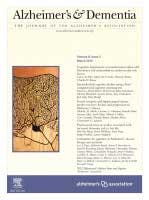The molecular and cellular mechanisms responsible for the etiology and pathogenesis of Alzheimer’s disease (AD) are not clearly defined, but progress is being made. Researchers know that inflammation within the brain is thought to be a major factor in the development of the disease. Studies suggest that peripheral infection/inflammation might affect the inflammatory state of the central nervous system.(1)
Chronic periodontitis is a prevalent infection that is associated with gram-negative anaerobic bacteria and the elevation of serum inflammatory markers including C-reactive protein. Recently, chronic periodontitis has been associated with several systemic diseases including AD. In this article we review AD, its causes, prevalence, and treatments. In another, we will examine the link between AD and periodontal disease.
Relevant data for researchers and professionals
We can begin our learning by reviewing the current state of AD in the USA. A look at 2012 Alzheimer's Disease Facts and Figures provides statistical data on Alzheimer's disease in the United States, as well as data on other forms of dementia.(2)
Specific information given includes:
• Overall number of Americans with Alzheimer's, both nationally and by state;
• Proportion of women and men with Alzheimer's and other dementias;
• Prevalence of Alzheimer's;
• Estimates of lifetime risk for developing Alzheimer's disease;
• Costs of dementia for individuals, families, local and state government, and the nation's health system, from acute services to long-term care and hospice;
• Number of family caregivers, hours of care provided, economic value of unpaid care nationally and for each state, and the impact of caregiving on caregivers;
• Mortality due to Alzheimer's disease, both nationally and by state, and death rates by age.(2)
AD is a type of dementia that causes problems with memory, thinking and behavior. Symptoms usually develop slowly and get worse over time, becoming severe enough to interfere with daily tasks.(3) AD is the most common form of dementia, an overall term for memory loss and other intellectual abilities serious enough to interfere with daily life. AD accounts for 50 to 80 percent of dementia cases.(3)
It is not a normal part of aging, even though most of those afflicted are 65 years of age or older. It is a progressive disease, getting worse over time. There is no cure, but some medications can slow the progression of AD. The U.S. Food and Drug Administration (FDA) has approved two types of medications, cholinesterase inhibitors (Aricept, Exelon, Razadyne, Cognex) and memantine (Namenda), to treat the cognitive symptoms (memory loss, confusion, and problems with thinking and reasoning) of AD.(4)
Memantine (Namenda) is approved by the FDA for treatment of moderate to severe AD’s, while the others are meant to treat earlier stages of AD. Memantine is prescribed to improve memory, attention, reason, language and the ability to perform simple tasks. It can be used alone or with other AD disease treatments.
There is some evidence that individuals with moderate to severe AD who are taking a cholinesterase inhibitor might benefit by also taking memantine.(4) Donepezil (Aricept) is the only cholinesterase inhibitor approved to treat all stages of Alzheimer’s disease, including moderate to severe.What does the future hold regarding treatment of AD?
As with all medications, the FDA requires clinical trials. Find out more about participating in a clinical study through the Alzheimer’s Association TrialMatch service , a free tool for people with Alzheimer's, caregivers, families and physicians to locate clinical trials based on personal criteria (diagnosis, stage of disease) and location.(5) In fact, Angela Kamer, PhD of New York University New York, New York, was awarded a New Investigator Research Grant of $100,000 over two years to study Infection/Inflammation and Cognitive Decline,
Does periodontal inflammation exacerbate cognitive and neurological changes linked with dementia? We will discuss this link in another section of the newsletter.
An estimated 5.4 million Americans have AD, including approximately 200,000 age <65 years who comprise the younger-onset AD population.(5) Over the coming decades, the aging of the baby boom generation is projected to result in an additional 10 million people with AD.
Today, someone in America develops AD every 68 seconds. By 2050, there is expected to be one new case of AD every 33 seconds, or nearly a million new cases per year, and AD prevalence is projected to be 11 million to 16 million. Dramatic increases in the number of “oldest-old” (those age ≥85 years) across all racial and ethnic groups are expected to contribute to the increased prevalence of AD.(1)
Projected changes between 2000 and 2025 in AD prevalence by state.
Created from data from Hebert et al. Neurology 2004; 62:1645 (6)
To view a table of the common types of dementia and their typical characteristics, click here.
AD is the sixth leading cause of death in the United States.(8) It is the fifth leading cause of death for those aged ≥65 years.(8) “At least 800,000 people in the United States who have AD are living alone, and people who have other forms of dementia add substantially to that total. People with dementia who live alone are at greater risk of missed or delayed diagnosis, inadequate self-care, social isolation, falls, unattended wandering, injuries, and death than people who have dementia but who live with others in the community. In addition, those who live alone are more likely to be placed into a nursing home earlier than those who live with others, increasing overall health care costs. Better ways to meet the needs of people who have dementia and who live alone may improve their quality of life and reduce overall health care costs”.(9)
Formed in 1980, the Alzheimer's Association advances research to end Alzheimer's and dementia while enhancing care for those living with the disease.(10) On the website you can find basics of AD, research, caregiver’s information, a message board, and how to plan for the future for one who has AD. You can use the Alzheimer’s Navigator to help you, your family, or your patients to figure out the next steps to develop a personalized action plan. It provides a step-by-step guidance by answering short surveys, tips and tools to use to be more informed, and programs and services in your community.
Learn the early warning signs of AD, to help you better treat these in our offices afflicted with this disease. As with any disease, with early detection, you can obtain the maximum benefit from available treatments. Some treatments may provide some relief of symptoms and help to maintain a level of independence longer. You may even be able to prevent AD symptoms by leading a brain-healthy lifestyle, or at worst, slow down or even reverse, the process of deterioration. While some factors, such as genetics, are out of your control, many powerful lifestyle factors are within your sphere of influence. A brain-healthy lifestyle includes: regular exercise; healthy diet; mental stimulation; quality sleep; stress management; and an active social life.(11) Let’s help spread the word!
References
1. Kamera AR, Craig RD, Dasanayakec AP, Brys M, Glodzik-Sobanskad L, and de Leon MJ. Inflammation and Alzheimer’s disease: Possible role of periodontal diseases. Alzheimer’s & Dementia, 4 (2008), 242–250.
2. Alzheimer's Association. 2012 Alzheimer's disease facts and figures. Alzheimer's and Dementia: The Journal of the Alzheimer's Association. March 2012; 8:131–168.
3. http://www.alz.org/alzheimers_disease_what_is_alzheimers.asp.
4. http://www.alz.org/alzheimers_disease_standard_prescriptions.asp.
5. http://www.alz.org/research/clinical_trials/find_clinical_trials_trialmatch.asp.
6. http://www.alzheimersanddementia.com/article/S1552-5260(12)00032-5/journalimage?loc=gr3&src=fig&free=yes&source=imageTab#. Page 10.
7. http://www.alzheimersanddementia.com/article/S1552-5260(11)00036-7/fulltext.
8. http://download.journals.elsevierhealth.com/pdfs/journals/1552-5260/PIIS1552526011000367.pdf.
9. http://download.journals.elsevierhealth.com/pdfs/journals/1552-5260/PIIS1552526011000367.pdf (p 159).
10. http://www.alz.org/.
11. http://www.helpguide.org/elder/alzheimers_prevention_slowing_down_treatment.htm.












